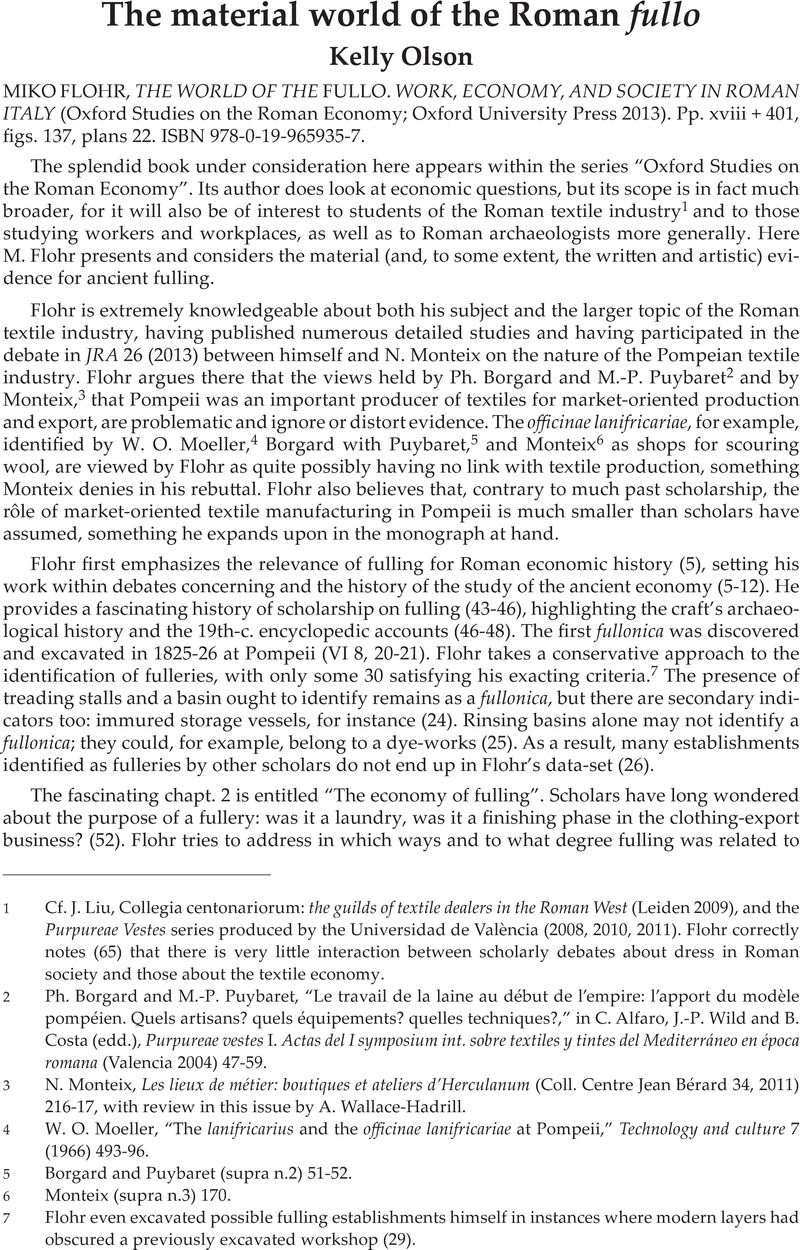No CrossRef data available.
Article contents
The material world of the Roman fullo - MIKO FLOHR, THE WORLD OF THE FULLO. WORK, ECONOMY, AND SOCIETY IN ROMAN ITALY (Oxford Studies on the Roman Economy; Oxford University Press 2013). Pp. xviii + 401, figs. 137, plans 22. ISBN 978-0-19-965935-7.
Published online by Cambridge University Press: 27 November 2014
Abstract

- Type
- Reviews
- Information
- Copyright
- Copyright © Journal of Roman Archaeology L.L.C. 2014
References
1 Cf. Liu, J., Collegia centonariorum: the guilds of textile dealers in the Roman West (Leiden 2009)CrossRefGoogle Scholar, and the Purpureae Vestes series produced by the Universidad de València (2008, 2010, 2011). Flohr correctly notes (65) that there is very little interaction between scholarly debates about dress in Roman society and those about the textile economy.
2 Borgard, Ph. and Puybaret, M.-P., “Le travail de la laine au début de l’empire: l’apport du modèle pompéien. Quels artisans? quels équipements? quelles techniques?,” in Alfaro, C., Wild, J.-P. and Costa, B. (edd.), Purpureae vestes I. Actas del I symposium int. sobre textiles y tintes del Mediterráneo en época romana (Valencia 2004) 47–59 Google Scholar.
3 Monteix, N., Les lieux de métier: boutiques et ateliers d’Herculanum (Coll. Centre Jean Bérard 34, 2011) 216–17Google Scholar, with review in this issue by A. Wallace-Hadrill.
4 Moeller, W. O., “The lanifricarius and the officinae lanifricariae at Pompeii,” Technology and culture 7 (1966) 493–96CrossRefGoogle Scholar.
5 Borgard and Puybaret (supra n.2) 51-52.
6 Monteix (supra n.3) 170.
7 Flohr even excavated possible fulling establishments himself in instances where modern layers had obscured a previously excavated workshop (29).
8 See, e.g., Sen., , De tranq. 1.5 Google Scholar; Granger-Taylor, H., “The emperor’s clothes: the fold-lines,” Bull. Cleveland Mus. Art 74.3 (1987) 114–23Google Scholar. Cf. also Croom, A., Running the Roman home (Stroud 2001) 108–11Google Scholar: “it is likely Romans looked a lot more crumpled than modern tastes would accept” (111).




